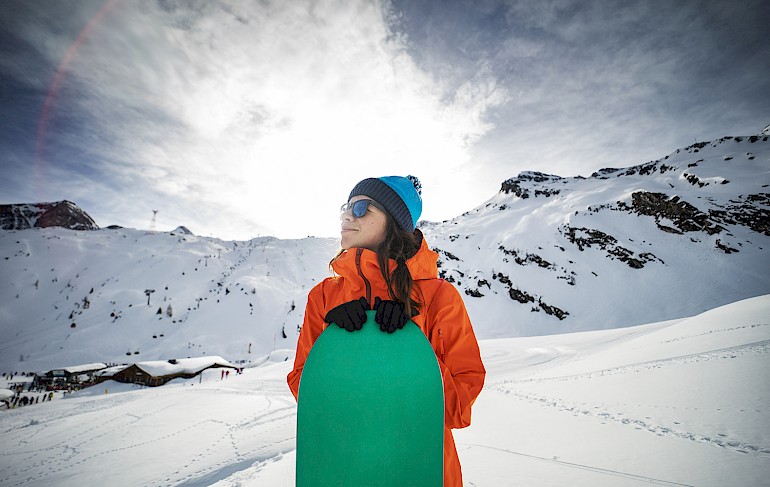
Choosing the right Snowboard
Having a good snowboard that suits you as a rider can either make or break your day and the choices for snowboards are almost limitless, with the introduction of new shapes and materials there is a board made for every type of terrain, condition, and rider. But where to start looking?
You can narrow down your search by first deciding what type of riding you will be doing, where you will be riding, and your ability level. You also want to buy a snowboard that will grow with you especially if you are a novice rider.
What's the Ideal Size: Choosing the correct size snowboard is essential for your enjoyment on the slopes. Start by considering your height and weight, as these factors largely determine the appropriate board length. A general rule of thumb is that the board should reach between your chin and nose when stood upright. Additionally, your skill level plays a role; beginners may benefit from a shorter board for easier maneuverability, while advanced riders might prefer a longer board for stability at higher speeds. Don’t forget to factor in your riding style—freestyle riders often opt for shorter boards for tricks, while freeriders lean towards longer boards for powder and stability. Finally, checking the manufacturer’s sizing chart can provide valuable guidance tailored to specific models.
What is the ideal width: Choose a snowboard that is good width for your boot size. A board that is too narrow for a large foot will create your foot to over hang the board resulting in toe drag while a board that is too wide for a narrow foot can make it hard for the rider to effectively use their edge. Personal preference and riding style are also a factor. Some riders may prefer narrower boards for agility, while those riding in powder often prefer a wider board for floatation. Finding the right width balances comfort, control, and the type of riding you enjoy.
Freeride Snowboards: Are generally directional board. The stance options are set so that there is more nose on the board then tail. This creates a shape which floats well in powder and cuts easily through bumps. The flex pattern on a freeride board usually makes it easier in one direction. You are still able to ride switch, but the board will turn and flex better in the direction it was designed. Freeride boards are also stiffer then freestyle boards. This allows them to hold an edge better and maintain control during high speeds, and on bumpy or varied terrain.
Freestyle boards: Most commonly come in a twin shape which means they have the same shape and flex on both the nose and tail. This allows both regular and switch tricks to be performed equally. Many freestyle boards, especially ones specified for rails, are much softer than freeride boards. This makes the board lock into rails better, press easier, and makes butter and manuals easier.
Powder Boards: These boards generally features a wider nose and a tapered tail, which help it float above the snow rather than sinking. They are often longer length and have a set-back stance to enhance stability and maneuverability in deep snow. Powder boards also offer a softer flex can provide a playful feel, allowing riders to navigate through varying conditions with ease.
Snowboard Shapes
Camber: Camber is the classic board shape; this is what started it all. If you put a cambered board down on a flat surface you will notice it makes contact with the ground just in front of the nose and tail. The middle is raised up off the ground by the flex of the board. Cambered boards offer a great amount of edge control, by having a larger contact point between the edge and the snow. They also have a substantial amount of pop, due to the board being flexed as soon as there is weight (the rider) on it.
Reverse Camber/Banana/Rocker: With the introduction of reverse camber snowboarding was changed forever. As the name suggests it is the opposite, or “reverse” of camber. When sitting flat a reverse camber board will make contact with the ground in the center. Rocking towards the nose and tail. These boards float exceptionally well in soft powdery snow, and are less likely to catch edges due to the nose and tail being raised slightly off the snow.
Hybrid: There are a wide variety of hybrid style board shapes. They combine positive points from camber, reverse, and flat boards to create a fine tuned board for any application.



